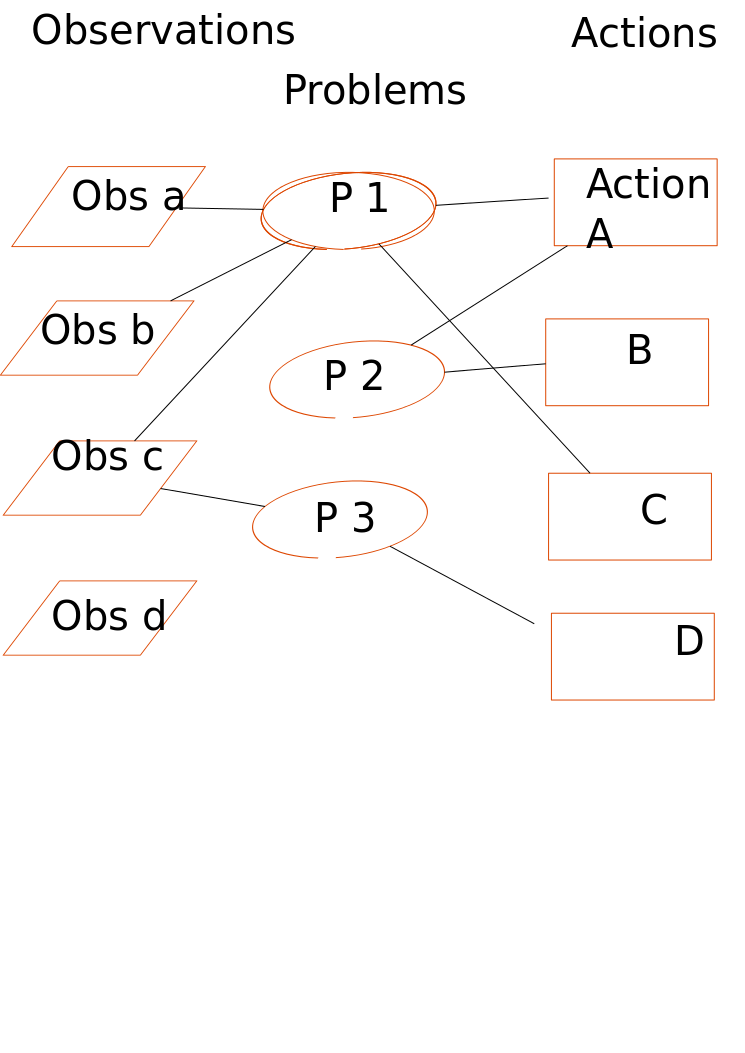CCTOS:
Problems Solving Issues
Draft Version 19 Aug 2016, Etienne Saliez, ---- Next -
Previous - Index of CCTOS Issues, /
- Issues:
- Up to now many medical archives, as well on paper as well on
electronic media, contain essentially descriptive and narrative data.
Events, like consultations and admissions, are described as separate
reports, one report for every new contact. In fact not much more than
a simulation of the old methodology on paper.
- Many medical records systems contain a lot of raw data, but often
lack any synthesis of the problems.
- Many regions have a great shortage of experienced healthcare staff,
particularly in developing regions. Remote small health centers must
relay on persons having relatively short nursing education.
- Some advanced decision support system already exist, but are not yet
largely available. Standardization of the observations remains a major
issue.
- Approaches:
- Since the essential healthcare goal is to contribute to solve
problems, the essential goal medical information management, going
beyond simple narrative documentation. Today informatics technology
makes that possible.
- Medical "work methodology":
- Collaborations in a Care Team require agreements about how to
manage and to share patient information.
- Clear guidelines are particularly important for beginners.
- Orderly managed patient information is a prerequisite before
access to medical knowledge bases would become useful.
- Orderly managed information is always a factor of care quality.
It prevent that some issues would be forgotten and neglected.
- Also a prerequisite before advanced decision support could be
implemented in the future.
- The recommended approach is to make at least clear distinctions
between Observations, Problems and Activities and to pay attention to
the links between these 3 types of informations.
- Observations:
- Record the facts, as what the patient did say, what you did
see, what has been measured, etc... Take notes about what is
obvious and should initially be token without any
assumptions. Beginners can learn relatively quickly how to
take notes about observations.
- Health Issues assessments:
- Given the available observations, assessments will be made
about one or more health issues. Heath Issues may be
preliminary concerns about a set of abnormal finding. May
later become a diagnose. Health Issue include also risk
factors.
- All care provider whatever they roles, should have a minimum
of overview of the problem list. Of course depending on their
specialised roles, will go deeper in the details of their
domain.
- Activities:
- Decision about activities are based on the current
understanding of the Health Issues by the doctor, often not yet
any obvious diagnose but just provisional hypothesis.
In the future some Activities will become automatically
proposed on the basis of the current Health Issues so far
identified. For example which next questions to the patient,
or which test seems to have the highest priority, on the basis
of what is already known as possible Health Issues.
- Activities include a wide range of possible procedures, as
well intended for more explorations, as well for treatments.
- Since Activities necessitate resources, they have to be
declared to the administration who need to make invoices.
- In principle all activities will result in some kind of
conclusion, as e.g. a lab report or a note about the effect of
a treatment. These results will increment the above set of
Observations and may introduce a next iteration of assessments
and new activities.
- Schemas:
- Semantic web technologies will be here very useful in order to
represent:
- Inside the patient record, the links between Observed facts,
identified Health Issues and ordered Activities.
- Links from the patient problems to external medical knowledge
bases.
- Schematic model:
